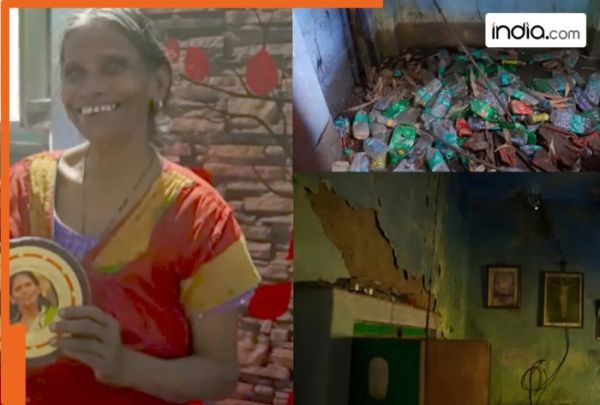The Unified Payments Interface (UPI) posted an increase in both transaction volume and value in July, rebounding from a decline in June, according to data released Friday by the payment railroad’s operator, the National Payments Corporation of India (NPCI).
The platform processed 19.47 billion transactions in July, up from 18.40 billion the previous month. Transaction value rose to Rs 25.08 lakh crore from Rs 24.04 lakh crore in June.
On a year-on-year basis, transaction volume rose 35%, while value grew 22%. The average daily transaction volume stood at 628 million, with a daily average value of Rs 80,919 crore.
The uptick comes amid growing discussions around the cost of processing UPI transactions. Banks are beginning to levy charges on certain UPI transactions due to a cut in the government incentive for processing small-value UPI-based payments.
The finance ministry has reduced the incentive for processing small-ticket UPI transactions at small merchant outlets to 0.15% per transaction from 0.25% last year, ET reported on Friday.
ICICI Bank has started passing on some of the charges to its payment partners, news platform The Head and Tale reported earlier this week.
Other digital payment channels also recorded growth in July, excluding Fastag.
The Immediate Payment Service (IMPS) processed 482 million transactions worth Rs 6.31 lakh crore, compared with 448 million transactions and Rs 6.06 lakh crore in June. Transactions via the Aadhaar Enabled Payment System (AePS) rose to 103 million from 97 million.
Fastag transactions declined to 371 million from 386 million the previous month. Last month, ET reported that Fastag’s growth had stagnated, with minimal traction in the last financial year due to the lack of new use cases beyond toll payments.
Since its launch in 2016, UPI has grown rapidly, driven by government initiatives following demonetisation, increasing smartphone penetration and adoption by private players such as Google Pay, PhonePe and Paytm. As of May 31, UPI had 65 shareholders, including public sector, private and foreign banks.
For the financial year ended March 2025, NPCI reported a 41.7% increase in net profit to Rs 1,552 crore, as per credit ratings firm ICRA. As a not-for-profit entity, NPCI classifies profits as revenue surplus. Its standalone revenue rose 19% to Rs 3,270 crore in FY25 from Rs 2,749 crore in FY24.
As of July, Google Pay and PhonePe continued to dominate the UPI ecosystem, together accounting for more than 80% of the market. Emerging players such as Flipkart-backed Super.Money, Navi, Bhim and Cred are gradually expanding their presence by offering cashbacks and other incentives. NPCI has yet to release app-wise transaction data for July.
Meanwhile, discussions around the long-term sustainability of UPI have gained momentum. Speaking at an event in Mumbai last week, Reserve Bank of India governor Sanjay Malhotra highlighted the need to make UPI payments financially viable, suggesting that either the government or end-users would have to bear the cost of running the system.
The digital payments industry has also been urging the government to reinstate the merchant discount rate on UPI payments. However, the government has reiterated that UPI will continue to be free for users.
The platform has experienced service disruptions in recent months, affecting all major UPI apps and several banking applications. NPCI attributed a major outage on April 12 to a surge in application programming interface (API) requests, particularly from banks excessively using the ‘Check Transaction’ API, which led to a slowdown in the system and a drop in payment success rates.
The platform processed 19.47 billion transactions in July, up from 18.40 billion the previous month. Transaction value rose to Rs 25.08 lakh crore from Rs 24.04 lakh crore in June.
On a year-on-year basis, transaction volume rose 35%, while value grew 22%. The average daily transaction volume stood at 628 million, with a daily average value of Rs 80,919 crore.
The uptick comes amid growing discussions around the cost of processing UPI transactions. Banks are beginning to levy charges on certain UPI transactions due to a cut in the government incentive for processing small-value UPI-based payments.
The finance ministry has reduced the incentive for processing small-ticket UPI transactions at small merchant outlets to 0.15% per transaction from 0.25% last year, ET reported on Friday.
ICICI Bank has started passing on some of the charges to its payment partners, news platform The Head and Tale reported earlier this week.
Other digital payment channels also recorded growth in July, excluding Fastag.
The Immediate Payment Service (IMPS) processed 482 million transactions worth Rs 6.31 lakh crore, compared with 448 million transactions and Rs 6.06 lakh crore in June. Transactions via the Aadhaar Enabled Payment System (AePS) rose to 103 million from 97 million.
Fastag transactions declined to 371 million from 386 million the previous month. Last month, ET reported that Fastag’s growth had stagnated, with minimal traction in the last financial year due to the lack of new use cases beyond toll payments.
Since its launch in 2016, UPI has grown rapidly, driven by government initiatives following demonetisation, increasing smartphone penetration and adoption by private players such as Google Pay, PhonePe and Paytm. As of May 31, UPI had 65 shareholders, including public sector, private and foreign banks.
For the financial year ended March 2025, NPCI reported a 41.7% increase in net profit to Rs 1,552 crore, as per credit ratings firm ICRA. As a not-for-profit entity, NPCI classifies profits as revenue surplus. Its standalone revenue rose 19% to Rs 3,270 crore in FY25 from Rs 2,749 crore in FY24.
As of July, Google Pay and PhonePe continued to dominate the UPI ecosystem, together accounting for more than 80% of the market. Emerging players such as Flipkart-backed Super.Money, Navi, Bhim and Cred are gradually expanding their presence by offering cashbacks and other incentives. NPCI has yet to release app-wise transaction data for July.
Meanwhile, discussions around the long-term sustainability of UPI have gained momentum. Speaking at an event in Mumbai last week, Reserve Bank of India governor Sanjay Malhotra highlighted the need to make UPI payments financially viable, suggesting that either the government or end-users would have to bear the cost of running the system.
The digital payments industry has also been urging the government to reinstate the merchant discount rate on UPI payments. However, the government has reiterated that UPI will continue to be free for users.
The platform has experienced service disruptions in recent months, affecting all major UPI apps and several banking applications. NPCI attributed a major outage on April 12 to a surge in application programming interface (API) requests, particularly from banks excessively using the ‘Check Transaction’ API, which led to a slowdown in the system and a drop in payment success rates.





